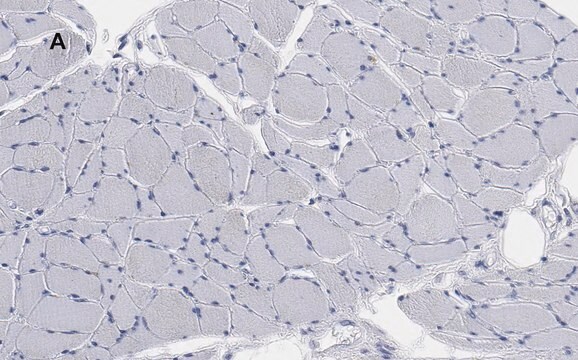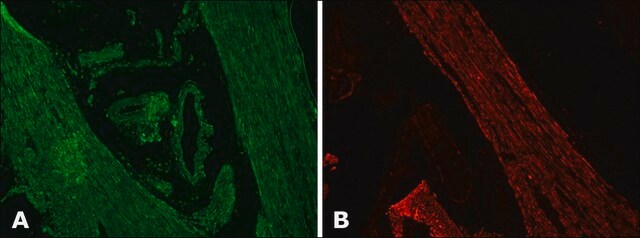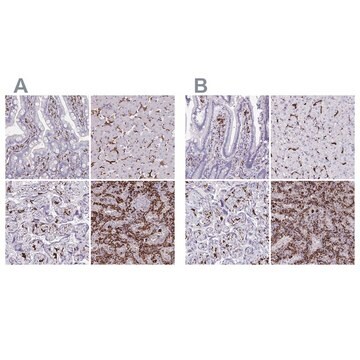Kluczowe dokumenty
SAB4200707
Anti-Desmin antibody, Mouse monoclonal

clone DE-U-10, purified from hybridoma cell culture
Synonim(y):
Anti-DES
About This Item
Polecane produkty
forma przeciwciała
purified from hybridoma cell culture
Poziom jakości
rodzaj przeciwciała
primary antibodies
klon
DE-U-10, monoclonal
Formularz
buffered aqueous solution
masa cząsteczkowa
antigen ~55 kDa
reaktywność gatunkowa
rat, rabbit, hamster, porcine, goat, bovine, chicken, toad, sheep, mouse, human
rozszerzona walidacja
independent
Learn more about Antibody Enhanced Validation
stężenie
~1.0 mg/mL
metody
immunoblotting: 0.5-1 μg/mL using whole extract of mouse myoblast C2C12 cells
immunofluorescence: 2-5 μg/mL using mouse myoblast C2C12 cells
immunohistochemistry: 2.5-5 μg/mL using heat-retrieved formalin-fixed, paraffin-embedded Human Appendix
microarray: suitable
izotyp
IgG1
numer dostępu UniProt
Warunki transportu
dry ice
temp. przechowywania
−20°C
docelowa modyfikacja potranslacyjna
unmodified
informacje o genach
human ... DES(1674)
mouse ... Des(13346)
rat ... Des(64362)
Powiązane kategorie
Opis ogólny
Immunogen
Zastosowanie
- immunoblotting
- immunofluorescence
- immunohistochemistry
- microarray
Działania biochem./fizjol.
Postać fizyczna
Oświadczenie o zrzeczeniu się odpowiedzialności
Nie możesz znaleźć właściwego produktu?
Wypróbuj nasz Narzędzie selektora produktów.
Kod klasy składowania
10 - Combustible liquids
Temperatura zapłonu (°F)
Not applicable
Temperatura zapłonu (°C)
Not applicable
Wybierz jedną z najnowszych wersji:
Certyfikaty analizy (CoA)
Nie widzisz odpowiedniej wersji?
Jeśli potrzebujesz konkretnej wersji, możesz wyszukać konkretny certyfikat według numeru partii lub serii.
Masz już ten produkt?
Dokumenty związane z niedawno zakupionymi produktami zostały zamieszczone w Bibliotece dokumentów.
Nasz zespół naukowców ma doświadczenie we wszystkich obszarach badań, w tym w naukach przyrodniczych, materiałoznawstwie, syntezie chemicznej, chromatografii, analityce i wielu innych dziedzinach.
Skontaktuj się z zespołem ds. pomocy technicznej







